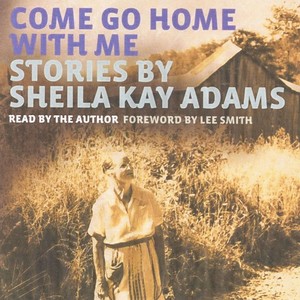
- 歌曲
- 时长
Disc1
Disc2
Disc3
Disc4
简介
Foreword, by Lee Smith Every time I hear Sheila Adams sing a ballad, a chill runs through my body like a brushfire, and the hair on my arms rises straight up. Sheila stands firm and tall to sing - feet apart, hands clasped, face lifted, eyes closed - and gives it everything she's got. Her dark hair falls down past her waist. She's not thinking about the audience, if there is one; she's not thinking about anything except the song. Each line ends in a little fillip - an abbreviated keening sound, a cut off wail - that indicates the pathos that is the stuff of these songs. Her voice is full of power, wisdom, pain. Upon meeting her, most listeners have the same surprised reaction I did: you can't believe she's so young. But Sheila comes by her authority honestly. She's a seventh-generation ballad singer, born and raised in the remote settlement of Sodom, way up in mountainous Madison County, North Carolina, which Bascom Lamar Lunsford once referred to as "the last stand of the natural people." When Cecil Sharpe was collecting ballads there in the early 1900s, he commented that Madison County was a place where people sang as easily as they talked. Sheila says, "I fell in love with the frailing banjo on first hearing it, but there was always something about the ballads that touched me deep inside, even back when I was knee-high to a grasshopper" - especially as sung by Granny, along with other Sodom singers like Berzilla Wallin, Cas Wallin, Vergie Wallin, and Inez Chandler. "It ain't surprising," Granny told her. "It's 'cause it's yourn." Sheila was learning to play the "old two-finger style" banjo from her uncle, Byard Ray, and her cousin, Jerry Adams. "Then when I was nineteen," she says, "these four men from West Virginia got a grant from the Rockefeller Foundation to come to Sodom and put on a festival. One of them, Dwight Diller, played clawhammer banjo. I just had to learn it." Sheila has been singing professionally for years, though her "day job" until recently was teaching school in Madison County. She graduated from Mars Hill College in 1974. She has won many awards, including First Place Old Time Banjo at the 1991 Mountain Dance and Folk Festival. Recently she has added storytelling to her repertoire and has turned into a full-time performer. I first ran into Sheila at a writing workshop that poet Kay Byer and I were conducting over in Cullowhee. The first exercise was simple: close your eyes, imagine a special place from your childhood, and write about it. On the spot, Sheila wrote the first draft of "It's a Sign," the first piece in this collection. As she read the story to us, we listened, transfixed. Two of the women were crying. Sheila finished reading the story and looked up at us. "I don't know how to write a story," she said. "Oh yes you do," we assured her. Oh yes. You do. And now she has written a lot of stories. Some of them are the old tales handed down through her family; others are Sodom stories from the not-so-distant past; still others are Sheila's own as she grows up and goes away and comes to understand the value and uniqueness of her heritage. Though Sheila's granny, Dellie Chandler Norton, whom she calls "the most exciting person I have ever known and the best teacher I would ever have," sometimes threatens to run away with this book, finally it is Sheila's own story she's telling here, from a perspective of "years later and a woman grown." And not only her own - for Sodom was (and is, for yet a little while longer) a community, a place where everybody knew everybody and who their people were. And Sheila knows them all - you'll meet Bertha and the snake handlers; Little Corrie, who took a notion to change her husband's suit after he was already in his coffin; Chester, who is always trying to save Briar's soul; and Sheila's own beloved grandfather, Breaddaddy, who taught her about death and dying with a graveyard dance. By turns hilarious and deeply moving, always lively, Sheila's stories paint the portrait of a whole culture, from the past to the present day. Many outsiders have traveled into Appalachia for the purposes of "finding material" or cataloging this culture. Sheila is the material; she is the source. Lee Smith Jefferson, North Carolina June 1994




